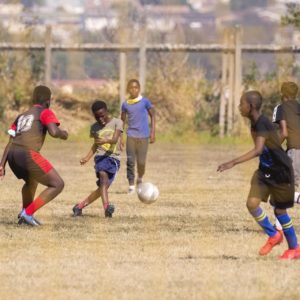A football tournament to unite Phoenix
Organisers invited teams from surrounding areas to participate at Eastbury Grounds in order to begin healing the racial rifts that the July unrest and killings caused in the KwaZulu-Natal township.
Author:
19 August 2021

Stitching the social fabric in Phoenix back together is going to be tougher and more demanding than rebuilding the brick-and-mortar buildings that were destroyed and set alight during the July unrest in KwaZulu-Natal and parts of Gauteng.
There are subtle as well as in-your-face reminders of the massacre that took place in the township in Durban. Even with camouflage, soldiers have blended into the neighbourhood like an elephant in a kraal. They strut the streets with big guns while the monstrous trucks that bring them there are strategically parked next to shopping centres.
A massive white container houses soldiers in the stadium that separates Phoenix and Bhambayi. Before the unrest that caused 36 confirmed deaths in Phoenix to date, the stadium linked the neighbouring townships.
Minor scars on the road mark where bonfires were lit when armed vigilantes and frightened citizens “protected” their Phoenix, which was never really under threat, with only shops and malls the target of the looting that deteriorated to violence and destruction of property. Murderous intentions among the vigilante groups spilled over from the task of “protecting”, resulting in racial profiling and the outright slaughter of Africans who came in contact with those groups.
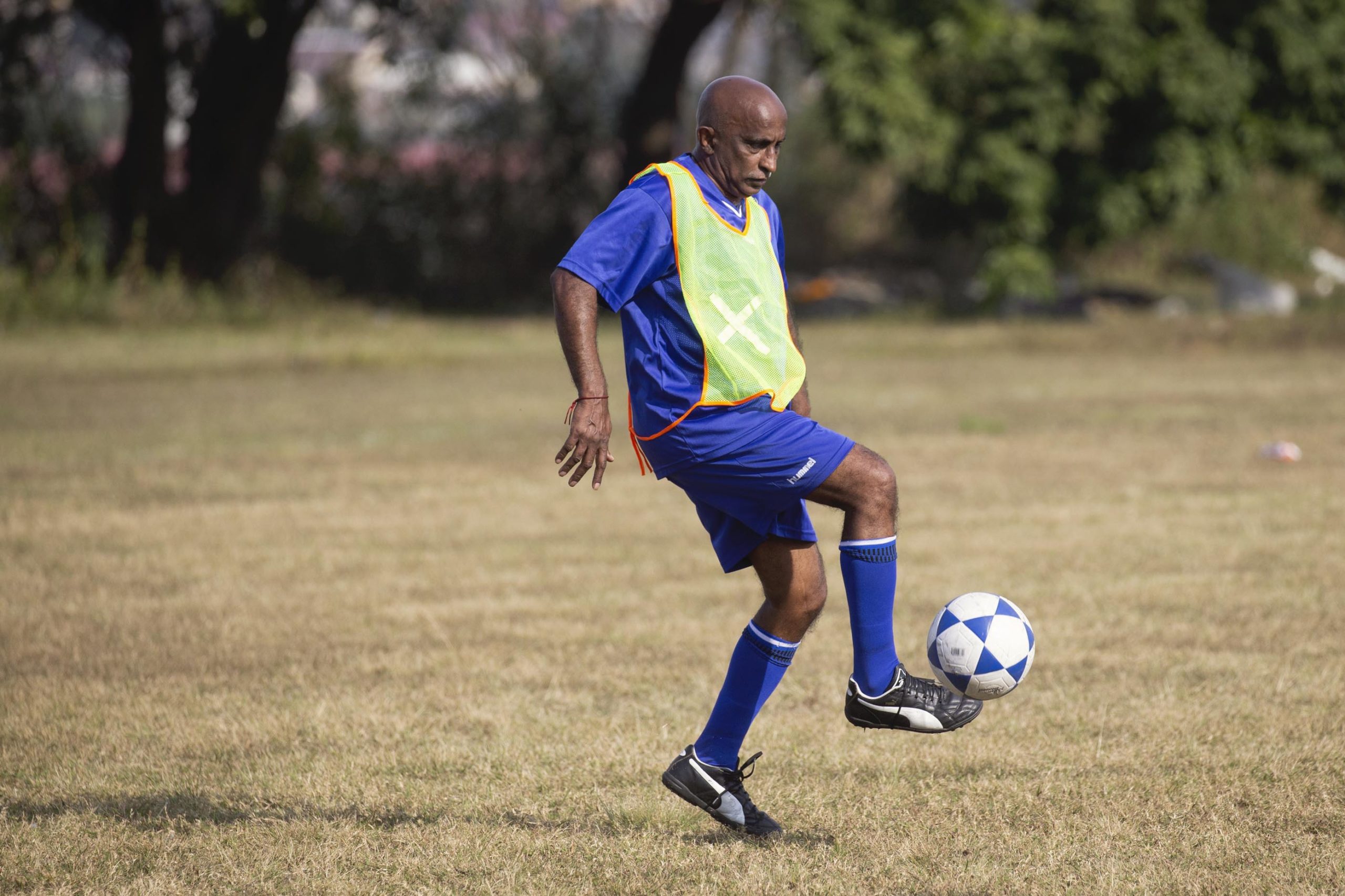
Minister of Police Bheki Cele announced that of the 36 people who were murdered, 30 were shot, two were burnt to death, one was stabbed and one was run over. The other two died from injuries they sustained after being assaulted. It’s no wonder then that the atmosphere is still tense – despite some form of normalcy returning to Phoenix and its surrounding townships, from which most of the murdered 36 came.
“There are no issues here, my brother,” said Sharm Maharaj over the phone, after confirming where to find Eastbury Grounds in Phoenix. “We have everything under control. You will see. It’s safe.”
The stadium is just over 7km from my home in White City, a township on the edge of Amaoti, Ohlange, Bhambayi, Brooks Farm and Phoenix. I have passed it several times on my runs. But because of what happened, it felt like venturing into another universe. The temporary closing of Westham Drive with makeshift barriers by the owners of Mambha Supermarket, who did so to protect their store from the looting, further added distance between home and Eastbury. Private security personnel allegedly killed four people while protecting the store during the riots.
Breaking down barriers
Maharaj and Theo Pillay, members of the Phoenix Peace Committee, were among the organisers of the football tournament staged at Eastbury Grounds on 1 August “to effect peace and harmony within our community and work towards our goal of a rainbow nation”, as the poster advertising the event boldly claimed.
Over-50s and Under-13s took part in the event that invited teams from Inanda, KwaMashu, Newlands and Phoenix. “Being the sporting person that I am, I suggested that, you know what, why don’t we take sport to our people and show them how during apartheid we used it to break down racial barriers. Now here again we have this issue,” said Pillay.
The young children who took part masked the tension with their youthful exuberance. The competition was fierce, but it was played in a friendly spirit. Clayfield Sporting, from Clayfield Unit 5 in Phoenix, were not only the most colourful side but also the most inclusive. Their team was mixed along race lines and included the young girls who have been part of their structure for some time in the club’s 25-year history.
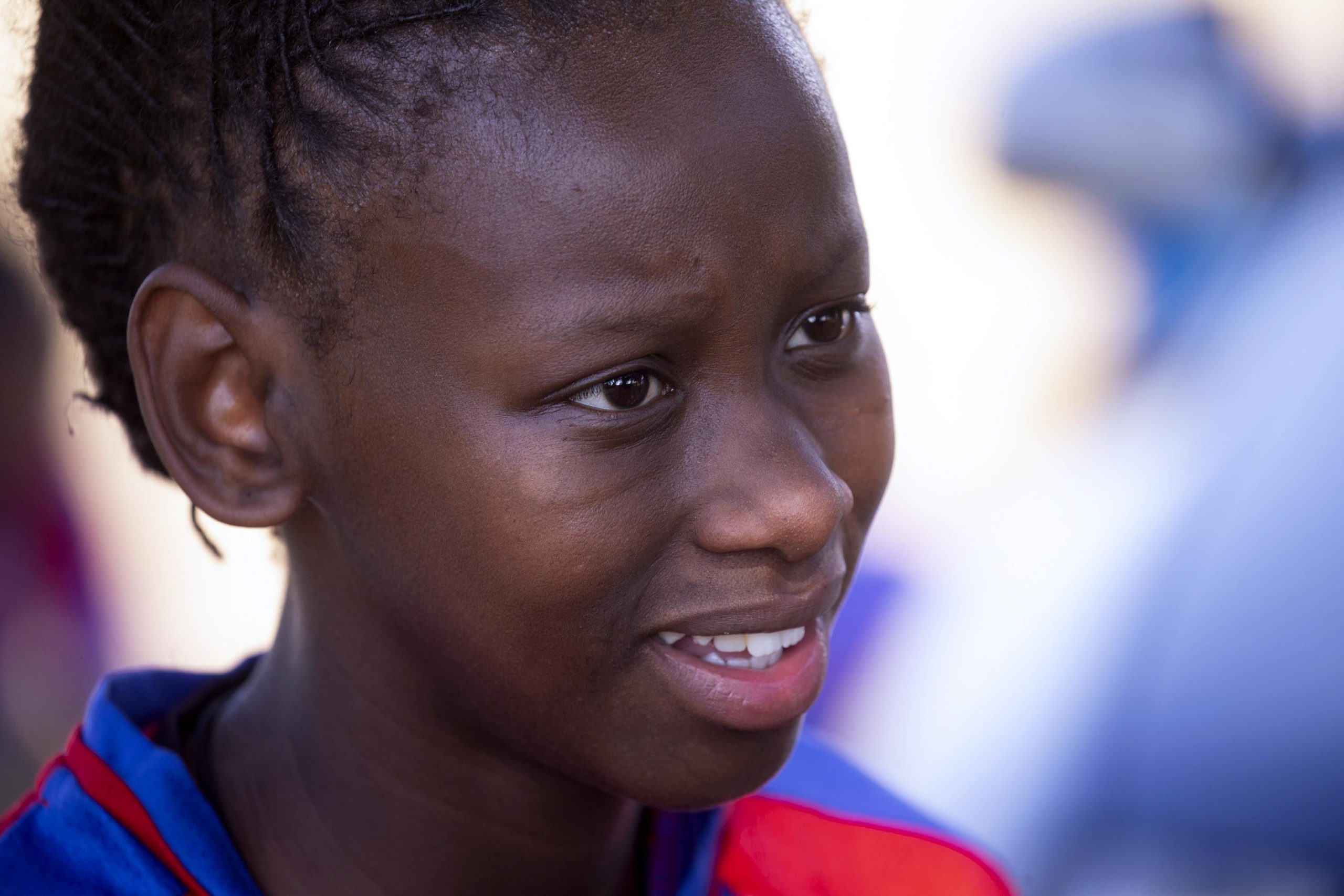
One of those young girls was Amahle Nono Khuzwayo, 14. She was solid in defence and enterprising when going forward. “My father’s older brother also played football. He would take me with when going to training, and I eventually ended up joining Clayfield. He was my first coach,” said Amahle, whose goal is to make it to Banyana Banyana where her idol, Andile Dlamini, has made the No. 1 jersey her own.
Amahle’s home is in Phoenix, but she was at her mother’s house in Inanda when the unrest sprang up. She found the whole ordeal puzzling. “They told me that Indians are killing us,” she said when I asked what her parents had told her about what was happening. “I wasn’t scared, though, because I know Indians. Some of them are my teammates at Clayfield.”
Experience over speed
Despite the tournament’s noble intentions, deciding to be a part of the games wasn’t an easy decision for most. One child cheekily told his friend that he told his parents he was going to play in Amaotana, not in Phoenix, because they would never have agreed to let him go.
“We were split into two camps when we got the invitation,” said Themba Ndlovu, 69. Ndlovu, who was animated on the touchline, was part of the KwaMashu Legends team who took on Phoenix All Stars.
“There were those who said we shouldn’t go there, this is a trap by the Indians. They want to kill us when we have gathered there. There was another group that was open to the idea, especially because this was organised by people we play with in the [over-50] league. We also had players who play for KwaMashu Legends who stay in Phoenix. They are originally from KwaMashu but have relocated; they stay with Indians.
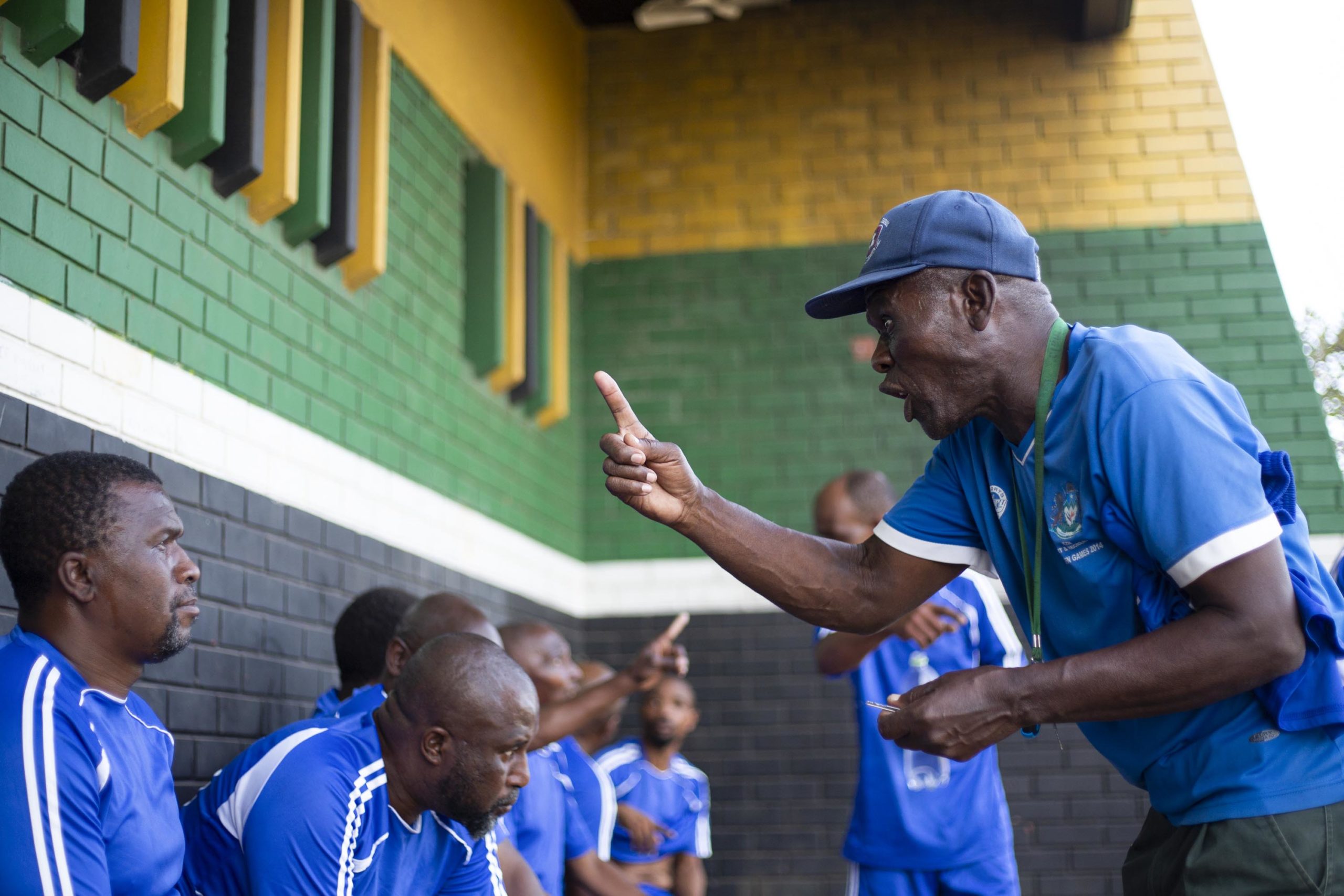
“So if we don’t want to be a part of an initiative that aims to bring peace, then when Indians really set out to kill Africans they would also kill our teammates who reside in Phoenix. It was important for many of us that there is peace in Phoenix, for the safety of our teammates and friends who stay there. We eventually ended up going there. There were 13 of us, because some were scared to go there and ended up not going. It was a great atmosphere and it went well.”
The over-50s match was the most entertaining. What they lacked in speed, they made up for in experience. The passes were played in a way that didn’t require anyone to chase after the ball, and when a loose ball was played the competitive spirit would get the better in how they would go after it, but their age would remind them what they can and cannot do.
A unity tool
After the 1949 riots, football was used as a tool to bring together Africans and those the apartheid government classified as Indian. The Natal Inter-Race Tournament was suspended in 1949 because of the riots, but the following year it was played with the intention “to encourage cooperation between the different races concerned for the good of all”, said George Singh, who with SL Singh donated the Singh Trophy that went to the winners of the tournament.
“There should be no divisions,” Pillay said. “We are one family. We are one united nation … What the unrest has created in our community is sad. Those who were doing the wrongs must be charged, on either side. Whether you are from community A or B, you cannot take the law into your own hands. You need to pay the price for that because you have created a huge disturbance in the communities.”
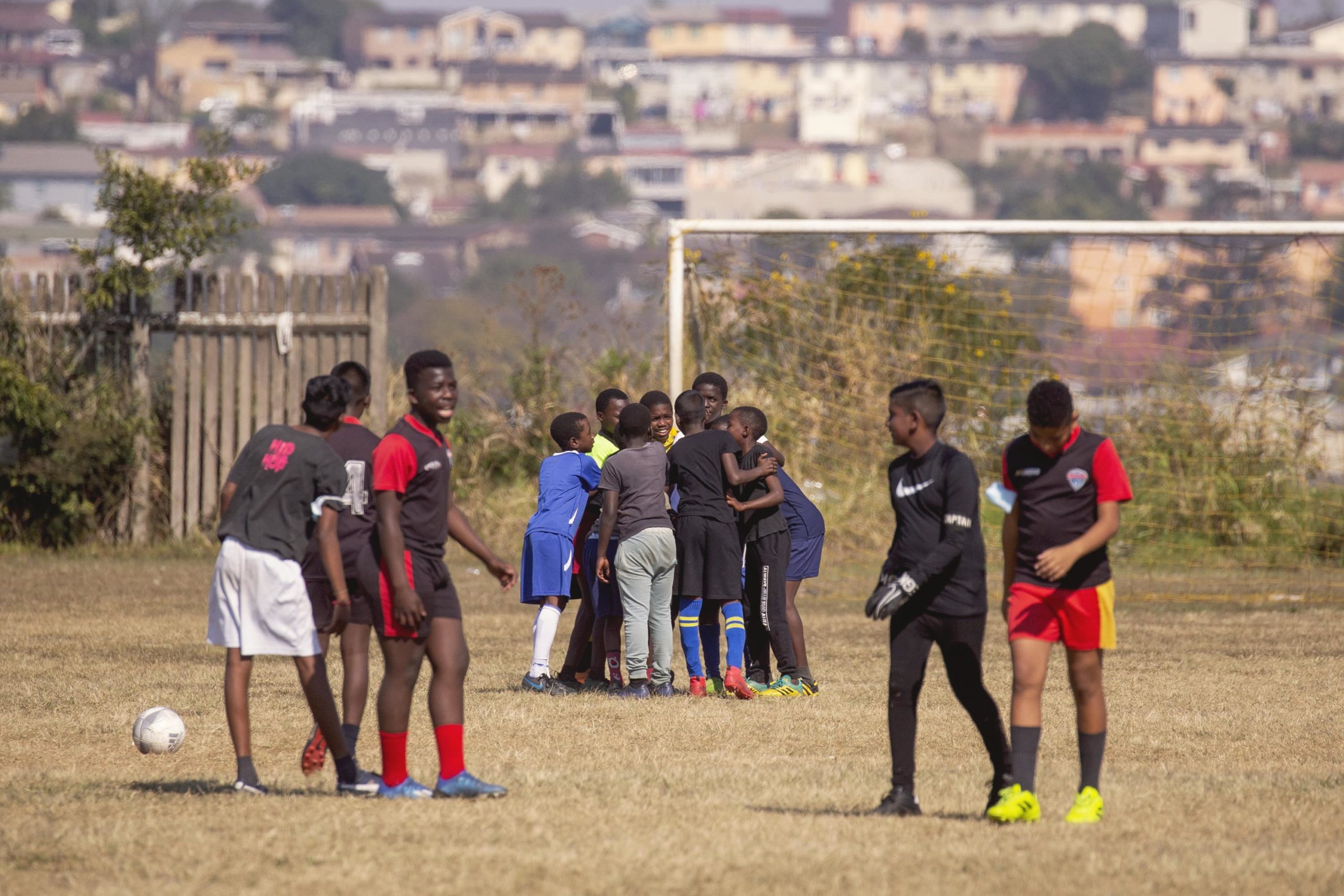
But football can only do so much, especially when it’s also part of the problem. While Eastbury Grounds is far from ideal, it’s way better than most stadiums in the townships that surround Phoenix, which mostly house Africans. “Our [over-50] league has players from all walks of lives. If we had proper grounds in KwaMashu, we would host them there and that would be important in mending bridges,” Ndlovu said.
“We go to play in the homes of the Indians’ teams, but they don’t come to play in our place because we don’t have good pitches. We are too old to be playing on these rigid pitches that aren’t maintained and some of them don’t even have grass. Our home ground, for instance, is in Parlock, because most of the pitches that are maintained and in good quality are in areas predominantly occupied by Indians.
“There is only one good stadium in KwaMashu, and that’s the Princess Magogo Stadium. But the municipality would never give us that stadium. We have tried. They tell us that that stadium belongs to so-and-so. Football is an important tool to unite different communities. When we finish our games, we open our cool boxes, open cold drinks and bottles I will not mention by name. If we finish a game at 3pm, we can sit there until 8pm, 9pm, just talking and bonding.”
A bottom-up approach
The democratic dispensation hasn’t done enough to address apartheid’s legacy, whereby most of the good sporting infractuture is in areas that were demarcated for white people. “Part of the way going forward has to be an acknowledgement of our failures as a democratic state,” said Ravi Pillay, member of the executive council for economic development, tourism and environmental affairs in KwaZulu-Natal.
“You would have heard just now one of the organisers here pointing at the state that the changing rooms here are in. That’s part of our failures. The key lesson for me going forward is that we have to have a bottom-up approach. You can’t get more bottom than here right now [in terms of junior amateur football]. Refurbishing this stadium wouldn’t be a mega-million project. It requires a small budget, in partnership with the community, and this is a new thing we need to develop. It doesn’t have to be a tender approach.”
The riots, Covid-19 forcing the budget to be redirected to health and education, and several budget cuts that KwaZulu-Natal has been forced to accept from the National Treasury as a result of national census data (based on austerity measures and the province’s migration patterns) mean that investing in sporting infrastructure at the amateur level is way down on the province’s list of priorities.
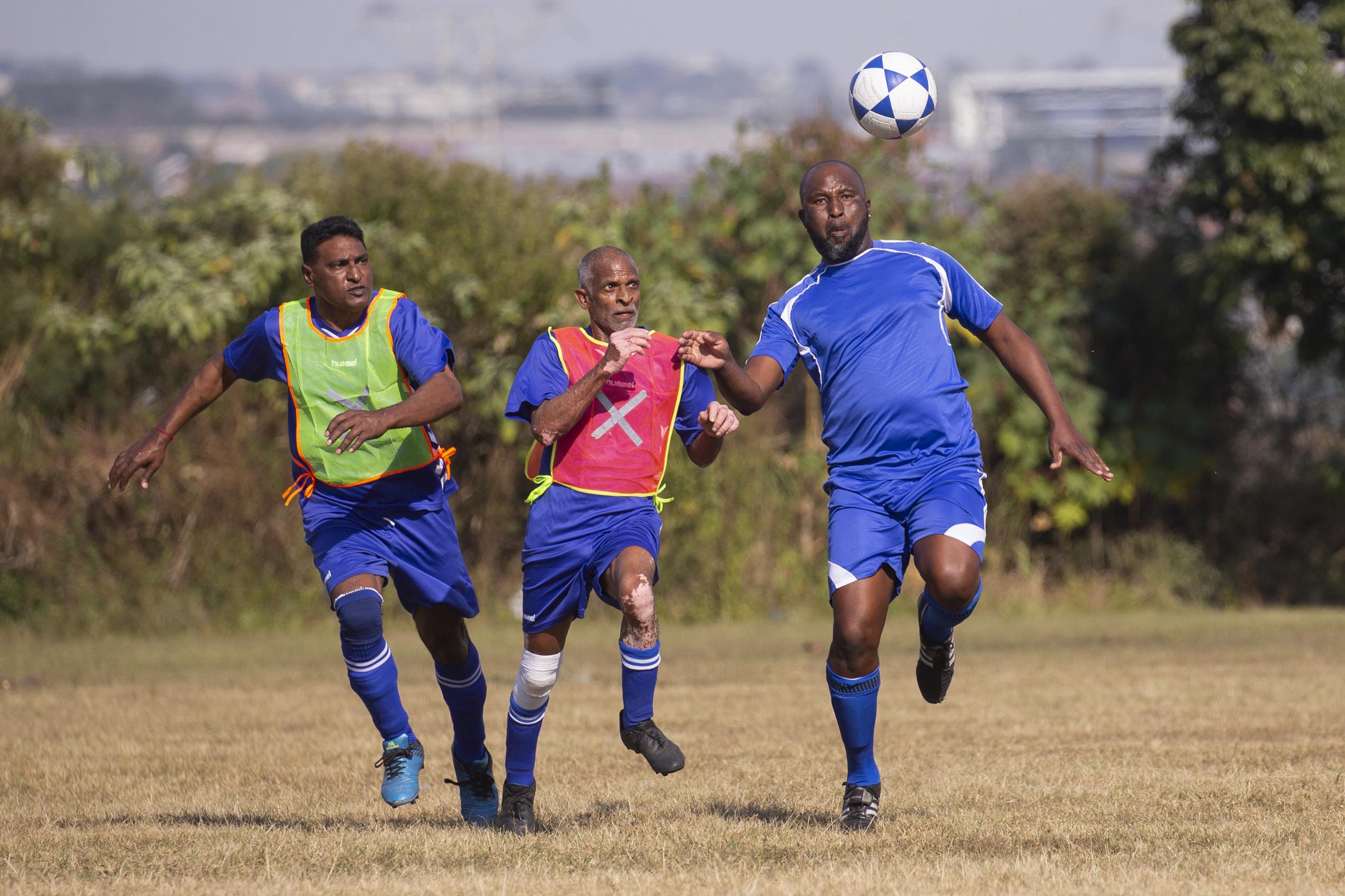
“We fight with them [the treasury] all the time, because we keep saying that their census must be taken on Christmas Day because everyone from KwaZulu-Natal is at home,” joked Ravi Pillay.
Theo Pillay said, “We had no power at the stadium, so we had to find connection somewhere. We had to get portable toilets because none were here. In this day and age, in our society, to not have infrastructure is bad. I am sure that it’s similar in all the areas outside of Phoenix. This affects all of us. Sportsmen of all colour and creed must have these facilities. Why are those in power not fixing these things? Service delivery in KwaZulu-Natal is pathetic. We all have to come together to fight for this. Let’s bring those people accountable to serve humanity.”
The communal approach to setting up this tournament is laudable. People rolled up their sleeves, dipped into their own pockets and came together to make it not only a success, but also a small step towards rebuilding the bridges that racist and criminal elements destroyed. This approach, as well as justice for those who died in the unrest, will go a long way towards mending the social fabric that was torn almost completely apart.

